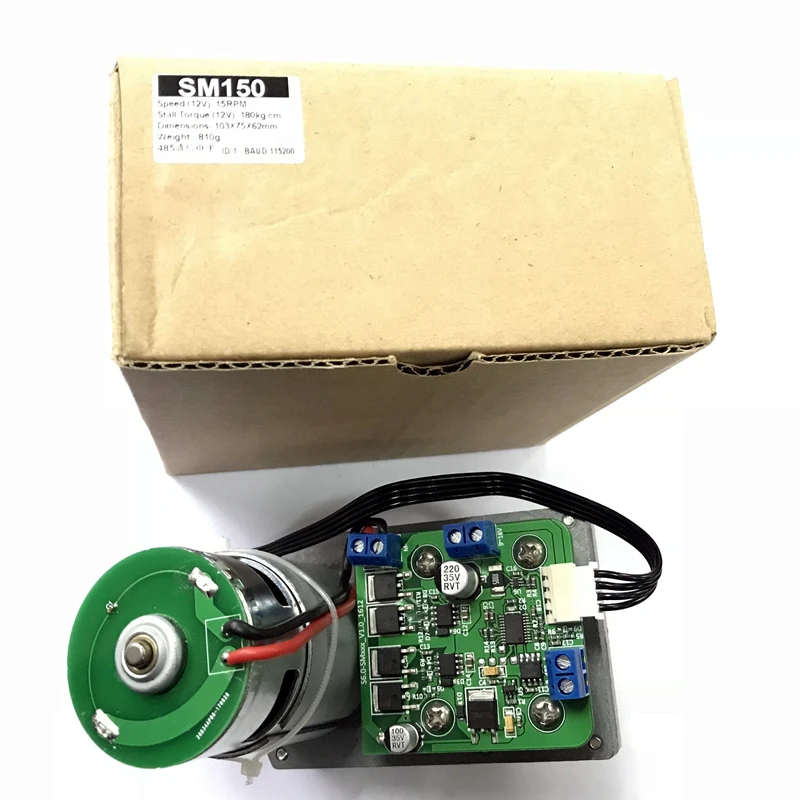


No need to bother with this one in the sketch. void update() - this one needs to be a public member since it is called by the timer callback routine.write(int degrees) - tells the servo to set its horn at the specified angle.An overload allows for specifying a potentiometer value offset. void attach(.) - attaches the servo to the specified pins and registers the servo with the timer callback routine.The MegaServo object has a couple of public members, the following of which are most important: The library supports two servos by default, but this may be extended by setting the value of de MAX_SERVOS define.

Large servo motor arduino code#
The attached code contains the MegaServo library and a simple demo sketch. In the example code attached this pin is A4 (this can be changed easily, see the next section). GND and +5V, the wiper goes to an analog Arduino pin. The potentiometers outer pins are connected to resp. The Monster Moto shield provides feedback on the current the motors are drawing through analog pins A2 and A3. The Monster Moto uses the following pins:īecause there's only one motor connected in this case only half of the double H-bridge pins are used. Since it is a shield it can be mounted on top of the Uno, but I choose to place it alongside of the Arduino, making it easier to use the other availble Arduino pins for other purposes. The H-bridged in case is a Monster Moto shield. In this case I used an Arduino Uno, but any type will do actually. The electronics part of our giant servo is composed of an Arduino, an H-bridge and the potentiometer we just glued onto the motor shaft. I then used lots of hot glue to fix both ends together. To fix the potentiometer on the other end I cut up a dial knob and pushed it topsy-turvy on its shaft. I took a small end of 8mm aluminium tube, thread-tapped it to fit the motor axle and screwed it on the thread on the axle. Although this turned out rather well for sliding both brackets together in the next step, I could have fixed the brackets just as wel on any surface. I mounted both brackets on some length of 4040 aluminium profile. The main challenge in this proved to be to drill the potentiometer shaft hole at the exact height so it would align perfectly with the motor axle. The potentiometer bracket required two holes be drilled: one to fit the potentiometer shaft, the other to hold the potentiometer peg to prevent it from turning along with the motor. the potentiometer I had to cut a large hole into the motor bracket to fit the shaft and I drilled an extra hole to be able to fit all the mounting screws of the motor. The brackets will require some work before they will fit the motor resp. This is done by using two opposing brackets, one holding the motor, the other holding the potentiometer. By reading the value of the potentiometer, we will know the rotation of the motor. In our case, this is achieved by mounting a potentiometer to the shaft of the motor.

The key to controlling any servo is for the controller to know at any moment what the position of the horn is. See the appropriate datasheet for specifics. For the same reason, the H-bridge may require a heatsink mounted on top of the chips. The wire should be capable of carrying the stall-current of the motor at the motor's operating voltage. Make sure to do some calculations before selecting the wire, for instance using this tool. Couple of inches of brass or aluminium tube Īlthough of course any type of electrical wire will do, a wiper motor under any serious load will draw a reasonable amount of current.Motor controller (such as the Sparkfun Monster Moto shield, or any other high current H-bridge).Potentiometer (I used a 50K one, but that doesn't really matter).Windshield wiper motor (or any other strong DC motor).This will be covered in the next section. Just a few parts are needed to create this big boy, although some parts require a bit of modification before they fit the design.


 0 kommentar(er)
0 kommentar(er)
